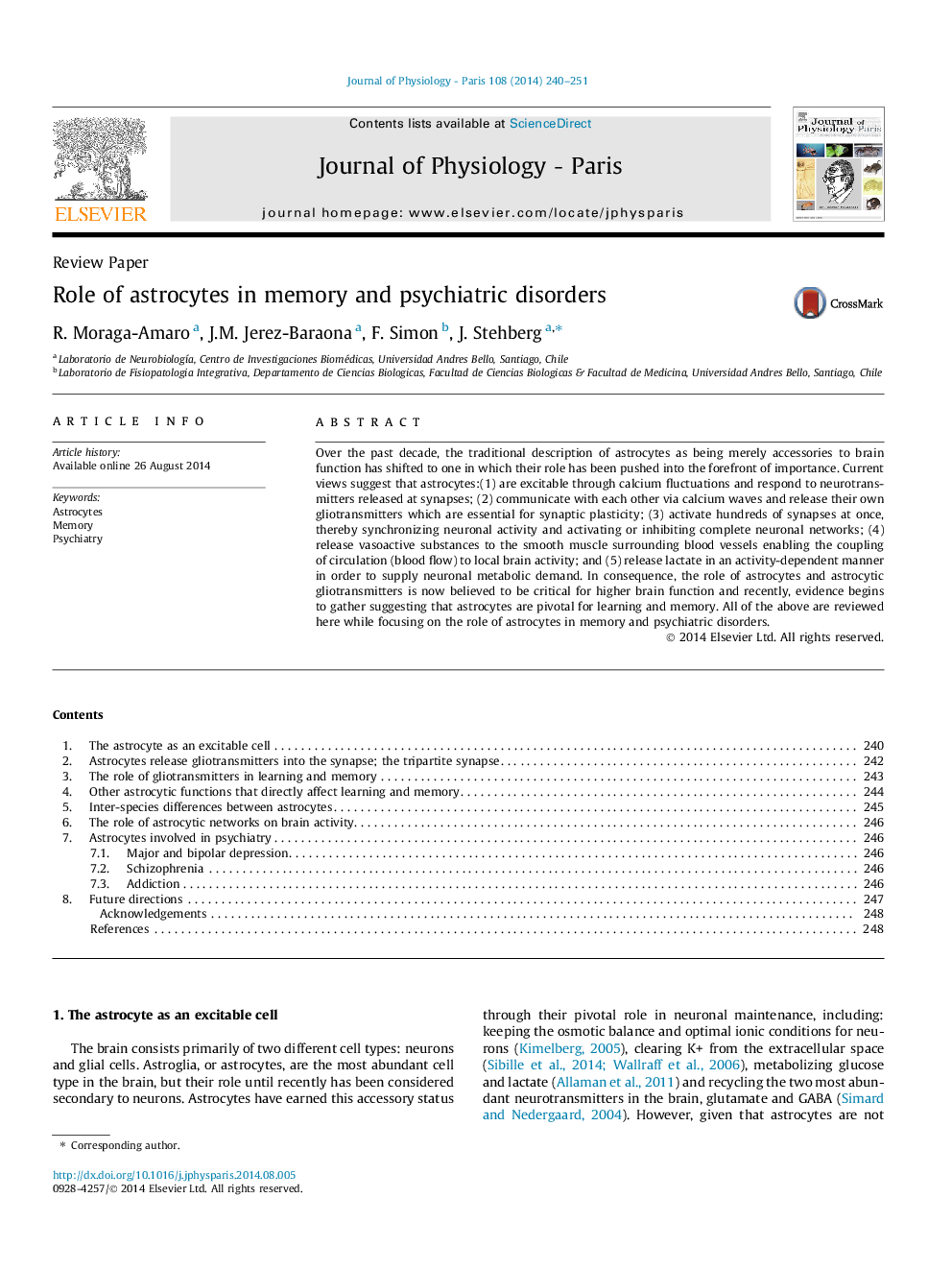| Article ID | Journal | Published Year | Pages | File Type |
|---|---|---|---|---|
| 2842165 | Journal of Physiology-Paris | 2014 | 12 Pages |
•Summarizes current knowledge on the role of astrocytes in memory.•Summarizes receptors expressed in astrocytes that may have a role in memory.•Discusses gliotransmitters released by astrocytes that may have a role in memory.•Summarizes current knowledge on the potential contribution of astrocytes in psychiatric disorders and their treatment.
Over the past decade, the traditional description of astrocytes as being merely accessories to brain function has shifted to one in which their role has been pushed into the forefront of importance. Current views suggest that astrocytes:(1) are excitable through calcium fluctuations and respond to neurotransmitters released at synapses; (2) communicate with each other via calcium waves and release their own gliotransmitters which are essential for synaptic plasticity; (3) activate hundreds of synapses at once, thereby synchronizing neuronal activity and activating or inhibiting complete neuronal networks; (4) release vasoactive substances to the smooth muscle surrounding blood vessels enabling the coupling of circulation (blood flow) to local brain activity; and (5) release lactate in an activity-dependent manner in order to supply neuronal metabolic demand. In consequence, the role of astrocytes and astrocytic gliotransmitters is now believed to be critical for higher brain function and recently, evidence begins to gather suggesting that astrocytes are pivotal for learning and memory. All of the above are reviewed here while focusing on the role of astrocytes in memory and psychiatric disorders.
